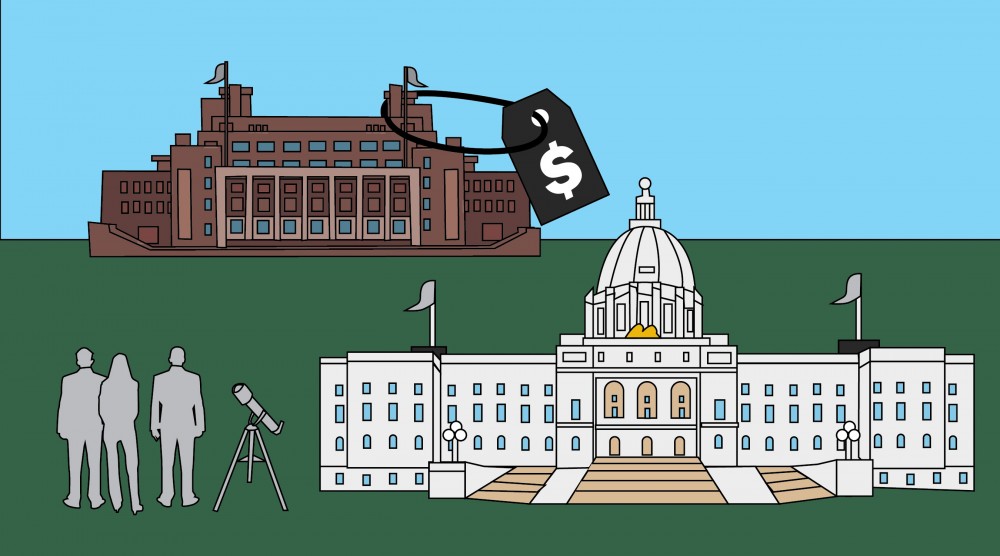The State of Minnesota had long intended to pay two-thirds of students’ public higher education costs; this is now a distant memory that resurfaces at the Legislature when lawmakers discuss college affordability.
The gradual disinvestment is partly due to some lawmakers’ belief that the University of Minnesota isn’t operating efficiently or transparently. Many say that pushes for strategy and accountability for the University, along with shifts in leadership at the Capitol and upcoming changes to University administration, might be what it takes to establish trust with the Legislature.
While state funding for the University has fallen behind rising tuition costs and inflation since the Great Recession around 2007, affordable college in Minnesota seems even more out of reach.
“We’re trying hard, but we’re not [back to state funding levels before the recession],” said Sen. Jason Isaacson, DFL-Shoreview.
A need for strategy
Before providing more funding to the University, some members of the Legislature have requested a formal and strategic budget strategy from the school in order to hold the University accountable for its spending.
The plan would help foster a better relationship between the University and the Legislature, said University Regent Michael Hsu. He said he has witnessed a disconnect while watching some University administrators interact with lawmakers.
But a shared, strategic plan for the University might prove the school’s accountability when asking for money, Hsu said.
University Vice President for Finance and Operations Brian Burnett told the Minnesota Daily in an email that strategic planning for the University is ongoing, set for release after President-designate Joan Gabel takes office.
“We’re all hoping that we can set the reset button, because the way [the] administration [has] run makes the legislature unhappy,” Hsu said. “They’re holding their noses and signing the checks. We need to make sure everyone recognizes we’re all on the same team.”
Sen. Greg Clausen, DFL-Apple Valley, suggested a long-term, statewide strategic plan for higher education to direct discussions about college affordability and the student debt load.
Clausen authored a bill that would fund a four year strategic plan, though it hasn’t been sponsored or heard in committee yet. He said lawmakers, the Office for Higher Education and some of the governor’s staff have shown interest in his plan.
“I think we lack an overall higher education plan that can take into consideration both systems,” Clausen said. “There are all kinds of issues we take a shotgun approach to versus a plan that we’re actually going to follow.”
Rep. Bud Nornes, R-Fergus Falls, said he doesn’t think Clausen’s strategic plan proposal would help solve college affordability questions. He said the school should be responsible to run efficiently itself.
“We’ll handle the money part and you’ll handle your part,” Nornes said. “We have high expectations in the end.”
Push for University accountability
Legislation has surfaced this session to hold the University more accountable for overlooked revenue in its budget.
Senate higher education committee chair Sen. Paul Anderson, R-Plymouth, authored a bill included in the Senate’s higher education omnibus bill that requires the University and Minnesota State colleges and universities to report on how they will reduce administrative costs in their schools by 10 percent to the Legislature by July 2020.
The legislation aims to push the school to cut costs to free up funds and curb rising tuition rates.
“[The Senate] feels the University has plenty of money and that it can squeeze more money out of what they do get because of administrative bloat,” said Larry Jacobs, director of the Center for the Study of Politics and Governance at the Humphrey School of Public Affairs.
But University administration have expressed concern over what the bill would require of them.
“In the upcoming fiscal year we anticipate adding to [administrative cut totals] with even more savings. Demonstrating to the Legislature, and all our stakeholders, our efficiency and our focus on effective cost management is a daily task and one that we take seriously,” Burnett said over email.
Shifts in party leadership
The University changed its strategy at the Capitol this year, emphasizing “prudent” needs by requesting around an $87 million increase to its biennial budget. That’s around $40 million less than what it asked for last year, which wasn’t a traditional budget allocation year.
Looking to freeze tuition, the DFL-controlled House proposed $27 million more than the University’s request in its higher education committee omnibus bill, to be voted on before May 20.
“What the house has done is pretty uncommon, I don’t recall it happening in the past,” Jacobs said. “The only thing that’s going to bring the University more money is a democratic legislature. I think the funding request is going to be shaped by the 2020 election.”
A Republican-controlled Senate proposed an increase of the University’s base appropriations by $24 million. DFL-Gov. Tim Walz proposal suggests the University receive $51 million over the next biennium in a revised budget, falling short of full funding for the school.
University administration has said these short budget proposals would lead to further tuition hikes and program cuts, among other changes. The school’s original ask factored in a 2 percent tuition increase for resident students at the Twin Cities campus.
Possible shifts in party leadership could lead to increased funding for the University, Isaacson said.
“I’m not confident that this legislative session we’re going to find a solution [to the college affordability dilemma], but I do believe that if the majority’s change in a year and a half, we’re probably going to see some significant change to how we approach higher education,” Isaacson said.

















